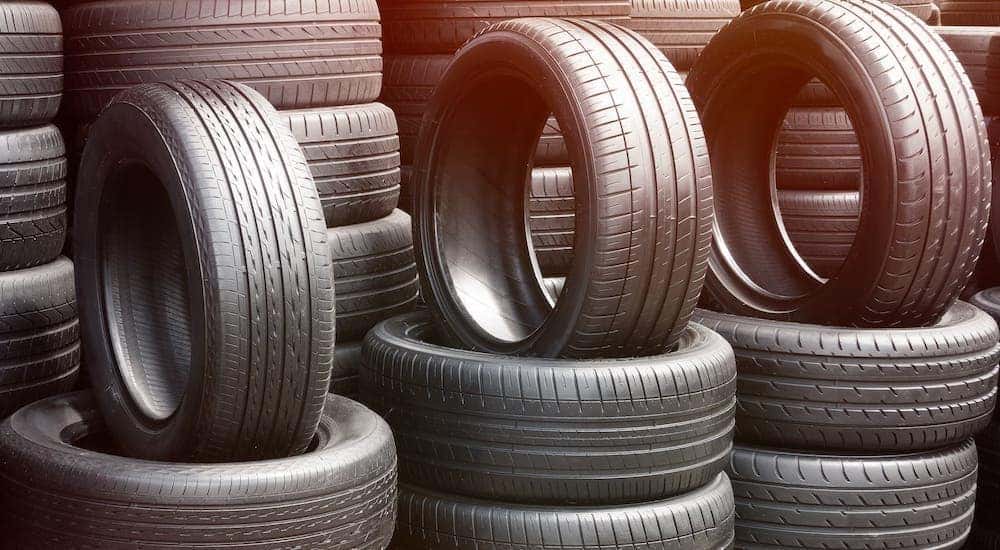Trust Morris Tire and Alignment for Expert Service and Treatment
Trust Morris Tire and Alignment for Expert Service and Treatment
Blog Article
Tire Service: Recognizing Tire Pressure Surveillance Equipments
Understanding Tire Pressure Tracking Systems (TPMS) is an essential element of preserving optimum lorry efficiency and safety on the roadway. With developments in automobile technology, TPMS has become a standard feature in modern lorries, offering real-time info on tire stress degrees.

Relevance of TPMS
The importance of Tire Stress Monitoring Systems (TPMS) depends on their capability to improve car safety and performance via real-time monitoring of tire stress degrees. Preserving the correct tire stress is critical for making sure optimal handling, stopping, and overall safety and security of a lorry. TPMS provides chauffeurs with immediate responses on any underinflated or overinflated tires, enabling prompt changes to be made.
Parts of TPMS
Sensing units are typically located in the tire shutoff stem or affixed to the wheel setting up, where they measure tire stress and transmit information to the control module. Some advanced TPMS designs additionally present the actual tire stress readings for each tire, supplying chauffeurs with real-time details to guarantee optimum tire efficiency and security. By checking tire pressure continuously, TPMS helps protect against crashes, reduces tire wear, and improves fuel performance, making it an essential element for vehicle safety and security and efficiency. tires morris il.
Kinds of TPMS

On the various other hand, indirect TPMS depends on the vehicle's wheel speed sensors to monitor tire stress. This system finds underinflation by contrasting the rotational speeds of the wheels. Indirect TPMS is less expensive than straight TPMS, as it makes use of existing sensors within the vehicle.
While direct TPMS uses extra precise readings, indirect TPMS is simpler in style and generally needs less maintenance. Both systems have their advantages and restrictions, and the click here for info option between them typically depends on variables such as price, vehicle make, and individual choice. Understanding the differences in between these 2 sorts of TPMS can assist car owners make informed choices pertaining to tire upkeep and safety.
TPMS Maintenance Tips
Conduct regular checks on the tire pressure degrees and contrast them with the TPMS readings to guarantee they are consistent. During tire turning or substitute, make certain that the TPMS elements are handled thoroughly to prevent any kind of potential damages. If the TPMS alerting light brightens on the control panel, deal with the concern immediately by checking the tire pressures and the total system for any kind of mistakes.
Benefits of Correct Tire Pressure
Keeping correct tire stress, as highlighted in TPMS Maintenance Tips, is critical for reaping the numerous benefits associated with optimal tire pressure levels. One of the main benefits of keeping the proper tire stress is boosted gas performance. When tires are appropriately blown up, there is much less rolling resistance, leading to far better fuel economy. In addition, appropriate tire pressure makes certain also tire wear, prolonging the lifespan of the tires and promoting safer driving problems. With the ideal tire pressure, vehicles additionally have better handling and traction, especially in negative climate condition. This can boost overall driving performance and security for the driver and guests. Maintaining optimum tire pressure can add to a smoother and much more comfortable adventure by decreasing resonances and sound created by underinflated tires. Finally, the benefits of correct tire pressure go past simply tire long redirected here life; they encompass improved visit here gas efficiency, improved safety, better car efficiency, and general driving convenience.
Final Thought
Finally, comprehending tire pressure tracking systems (TPMS) is critical for keeping optimum tire pressure and making sure automobile safety. By identifying the value of TPMS, recognizing with its parts, recognizing the different kinds offered, adhering to appropriate maintenance suggestions, and understanding the benefits of keeping appropriate tire stress, motorists can enhance their driving experience and extend the life-span of their tires. Proper tire stress is key to effective and secure car operation.

Report this page